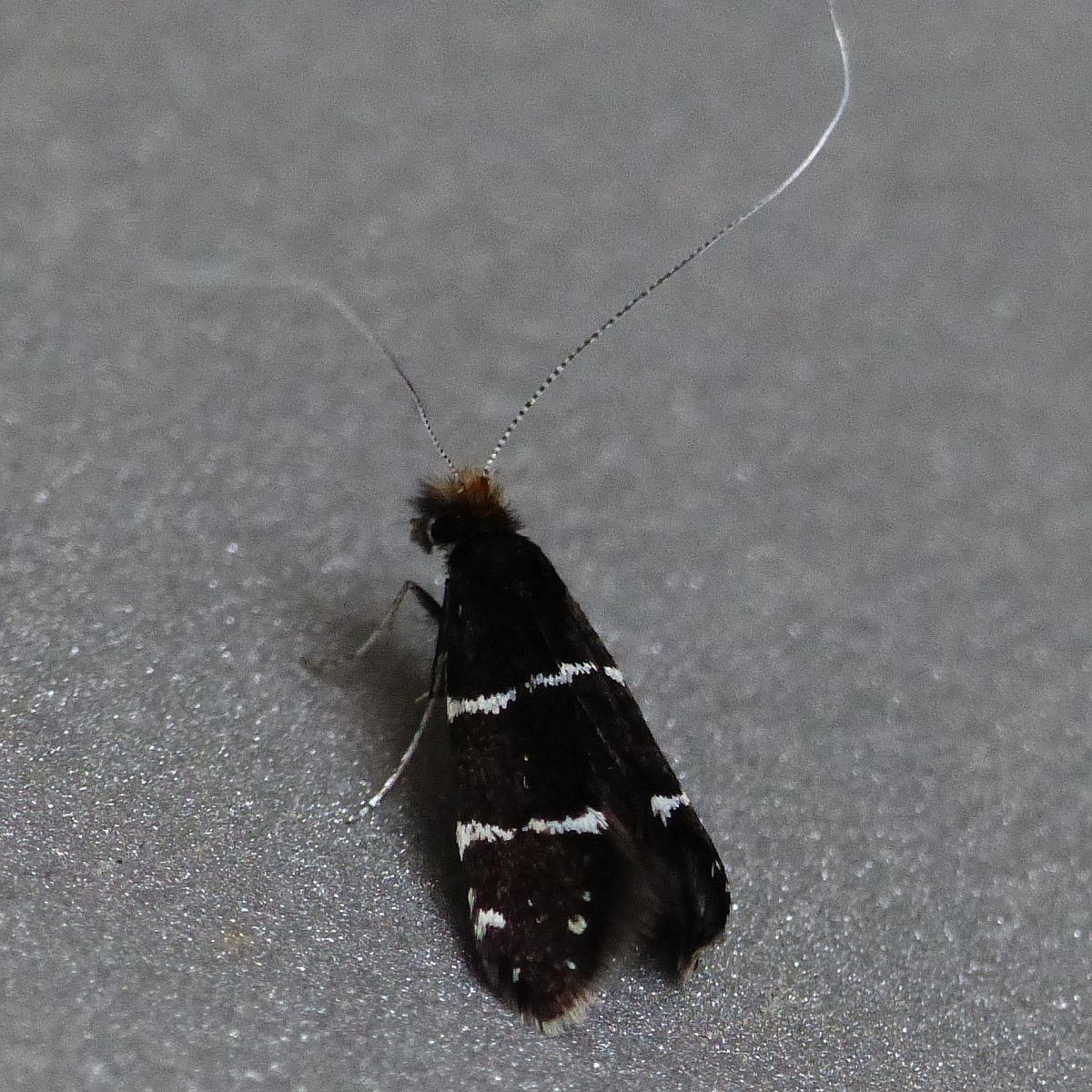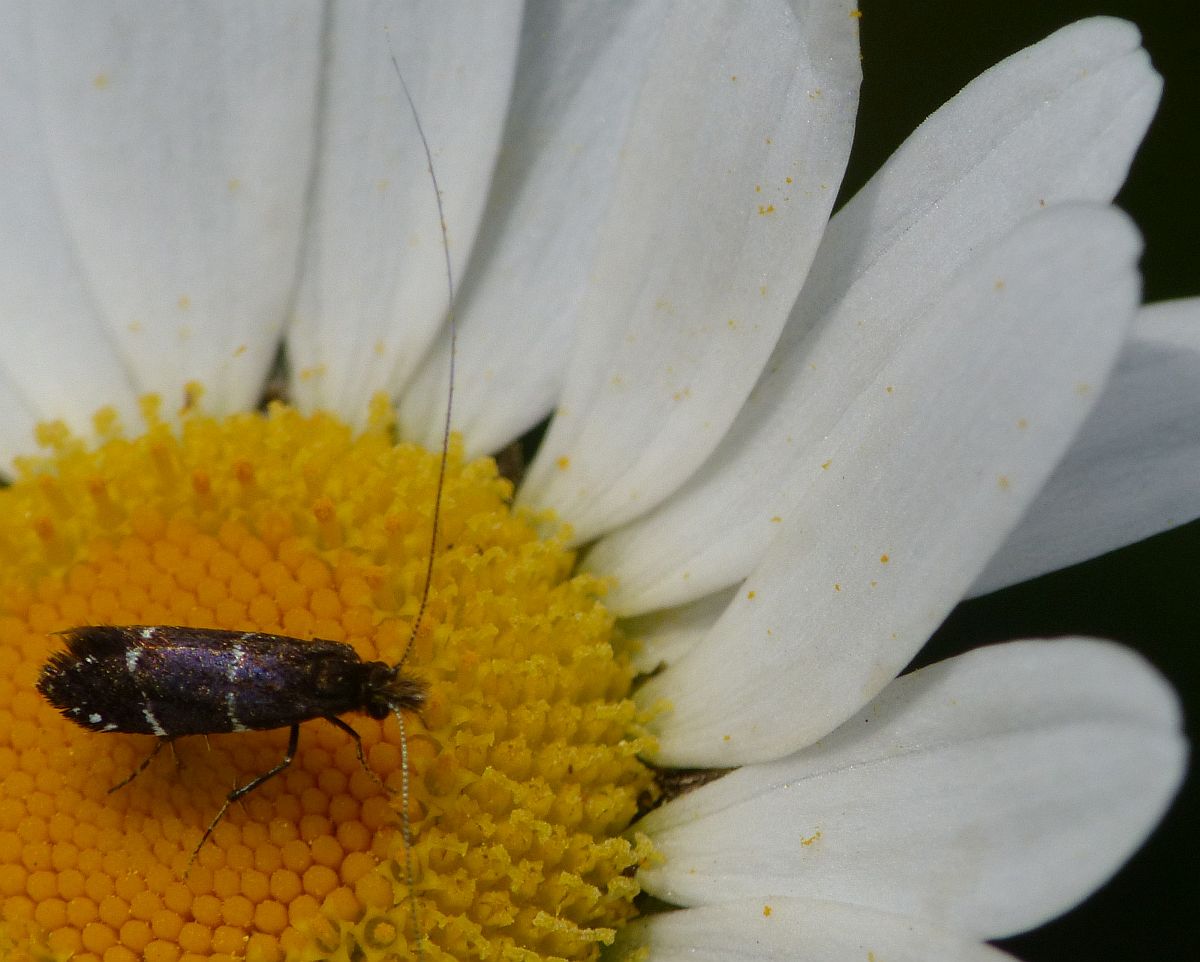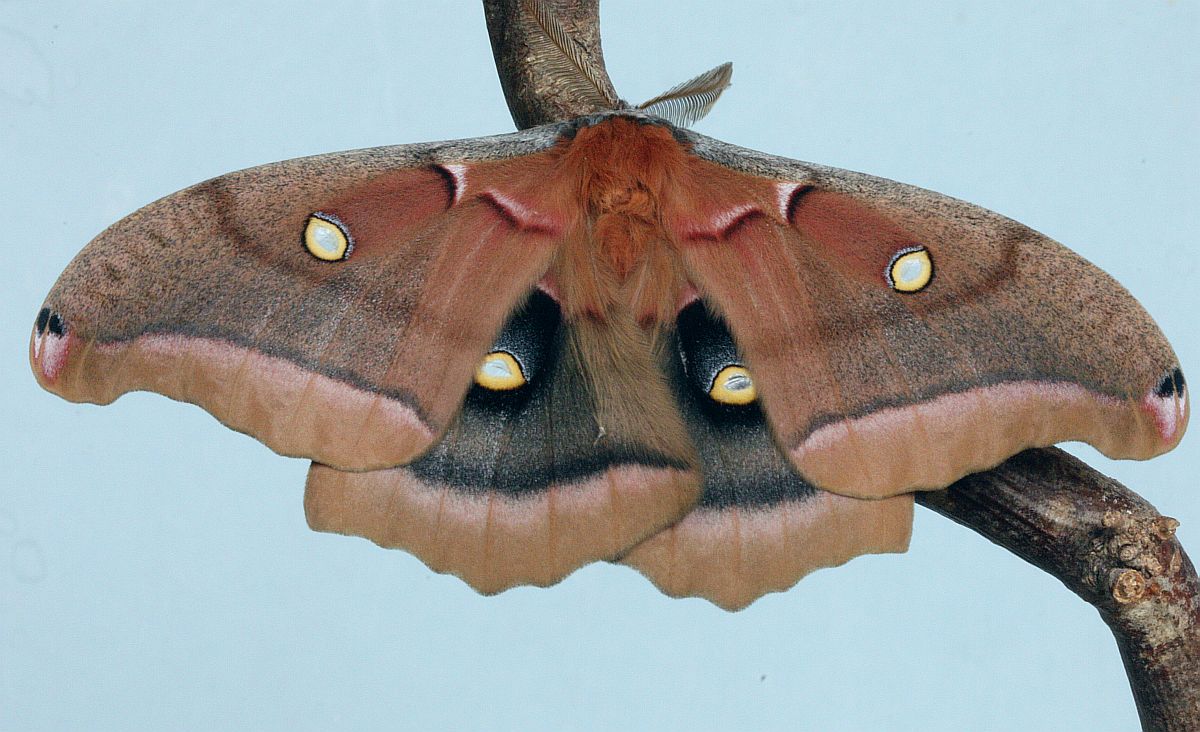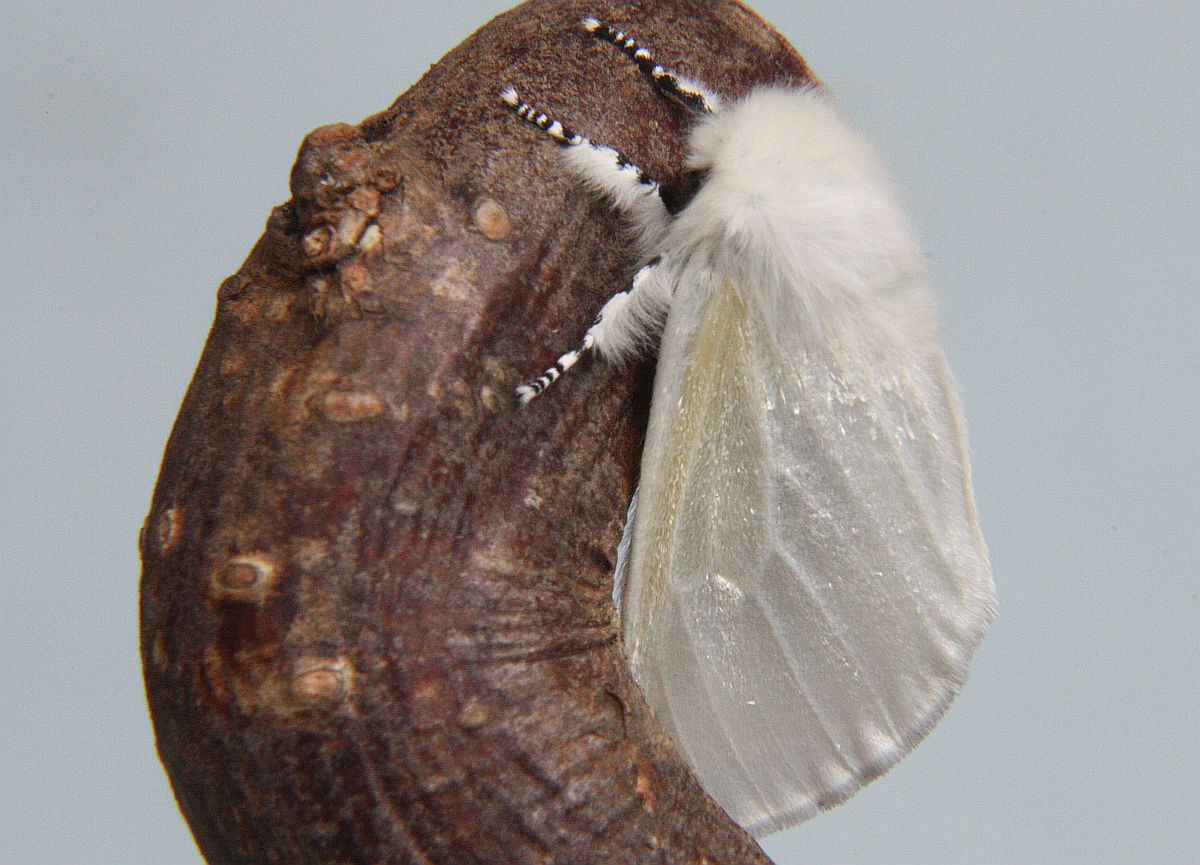June 7
2018 June 7
Request for help. David Harris, butterfly enthusiast from Sussex, England, is visiting here from Monday June 11 to Tuesday June 19, specifically to see some butterflies. I imagine that I shall find no difficulty in finding the two Tiger Swallowtails and Lorquin’s Admiral. There need be no special search for Red Admirals, Painted Ladies or Cabbage Whites, since these are plentiful in Sussex. But there seems to be a little lull in butterflies at the moment, and I may be hard-pressed to find anything else. I ask viewers, therefore, to let me know of sightings of any other than the aforementioned species between now and June 19, so that I can show some to David.
If there are rather few butterflies at the moment, moths are doing a little better. Jochen Möhr sends photographs of Adela septentrionella from Metchosin. These remarkable little moths with long antennae are variously known as fairy moths or longhorn moths. Ren Ferguson has also been seeing them recently on Salt Spring Island. The adult moths seem to be particularly attracted to Ox-eye Daisy. There is a similar species that occurs locally, A. trigrapha. It would be interesting to know whether it, too, is attracted to Ox-eye Daisy.


Adela septentrionella (Lep.: Incurvariidae) Jochen Möhr


Adela septentrionella (Lep.: Incurvariidae) Jochen Möhr
The story about the baby who had a caterpillar of a Silver-Spotted Tiger Moth in her mouth (see yesterday’s posting) is on the front page of today’s Times-Colonist, including a photograph of the caterpillar, which is indeed a Silver-Spotted Tiger Moth. Amazingly, the Times-Colonist spelled Lophocampa argentata correctly, even to the capital L, so we can perhaps forgive them for not setting it in italics. Less forgivable is their use of “larvae”, as though it were a singular noun. I erred yesterday in saying that the caterpillar had dropped into the baby’s mouth. Apparently she picked it up while it was crawling nearby, and placed it in her mouth.
From the small to the large. The Polyphemus Moth shown below emerged today from the cocoon found at Rithet’s Bog and shown on March 2. This is a male. Matthew Powell’s Polyphemus moth shown on June 4 was a female. See the difference in the antennae.


Male Polyphemus Moth Antheraea polyphemus (Lep.: Saturniidae) Jeremy Tatum
Although last Sunday’s (June 10) butterfly walk produced no butterflies (it was raining!) we found a very hairy moth pupa near Blenkinsop Lake. Today it produced the moth shown below.


White Satin Moth Leucoma salicis (Lep.: Erebidae – Lymantriinae) Jeremy Tatum
